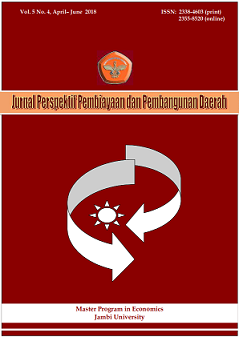Merger & acquisition strategy for growth, improved performance and survival in the financial sector
DOI:
https://doi.org/10.22437/ppd.v5i4.5010Abstract
This paper aims to provide comparative information on mergers & acquisition activities in the banking sector of Pakistan. This study used accounting ratios to analyze the financial performance of banks in Pakistan after merger and acquisitions. The study utilized secondary data which were taken from Thomson Financial Services Worldwide M&A database, financial statements of bank’s corporate website and Pakistan stock exchange. In this study, financials for eleven years (2005-2016) were analyzed by using ratios. In spite of certain limitations, accounting ratios are still reflected as an easy and reliable analytical tool. Ratio analysis, being a time-tested method, is most frequently employed in all financial decision-making processes. The results show that the financial performance of banking sector of Pakistan in the capacities of profitability, and leverage, has been quite satisfactory before the merger deal. It means that merger deal fails to improve the financial performance of the bank, and banks merge with other small or equal size banks only to capture market share, to open Islamic window, for cost-cutting, to create synergy, to gain efficient resources and to unlock hidden values
Downloads
References
Abbas, Q., Hunjra, A. I., Saeed, R., &Ijaz, M. S. (2014). Analysis of Pre and Post Merger and Acquisition Financial Performance of Banks in Pakistan. Information Management and Business Review, 6(4), 177. Retrieved from https://ifrnd.org/journal/index.php/imbr/article/view/1113
Abdul-Rahman, O. A., &Ayorinde, A. O. (2013). Post Merger Performance of Selected Nigerian Deposit Money Banks-An Econometric Perspective. International Journal of Management Sciences and Business Research, 2(8), 49-59.
Ahmed, F., Ahmed, A., & Kanwal, S. (2018). Mergers and Acquisitions in Selected Frontier Markets of Asia. Signifikan: Jurnal Ilmu Ekonomi, 7(1).
Ahmed, A., &Nadeem, M. (2015). Mergers & Acquisitions and Banks Performance in Pakistan. Journal of Business Management and Economics, 3(10), 28-32.
Banalâ€Estañol, A., Heidhues, P., Nitsche, R., &Seldeslachts, J. (2010). Screening and merger activity. The Journal of Industrial Economics, 58(4), 794-817.
Carletti, E., Hartmann, P., &Spagnolo, G. (2007). Bank mergers, competition, and liquidity. Journal of Money, Credit and Banking, 39(5), 1067-1105.
David, H., Michelle, L. (2011). When Do Banks Listen to Their Analysts? Evidence from Mergers and Acquisitions. The Review of Financial Studies, 24(2): 321-357. Doi: https://doi.org/10.1093/rfs/hhq087
Doukas, J. A., & Zhang, W. (2016). Envyâ€Motivated Merger Waves. European Financial Management, 22(1), 63-119.
Ghosh, S., &Dutta, S. (2015). Mergers and Acquisitions in Indian Banking Sector: Pre-Post Analysis of Performance Parameters. International Organization of Scientific Research in Journal of Business and Management, 17(3), 1-9.
Hagendorff, J., & J Nieto, M. (2015). The safety and soundness effects of bank M&A in the EU: does prudential regulation have an impact?.European Financial Management, 21(3), 462-490.
Hagendorff, J., & Keasey, K. (2009). Postâ€merger strategy and performance: evidence from the US and European banking industries. Accounting & Finance, 49(4), 725-751.
Haushalter, D., & Lowry, M. (2010). When do banks listen to their analysts? Evidence from mergers and acquisitions. The Review of Financial Studies, 24(2), 321-357.
Kemal, M. U. (2011). Post-merger profitability: A case of Royal Bank of Scotland (RBS). International Journal of Business and Social Science, 2(5), 157-162.
Kumar, S. (2013). Impact of Bank Mergers on the Efficiency of Banks: A study of the merger of Bharat Overseas Bank with Indian Overseas Bank. International Journal of Academic Research in Business and Social Sciences, 3(12), 221.
Masud, N. (2015). Impact of merger and acquisition on the financial performance of banks: Evidence from Pakistan. Reseach Journal of Recent Science, 4(5), 108-113.
Oloye, M. I., &Osuma, G. (2015). Impacts of Mergers and Acquisition on the Performance of Nigerian Banks (A Case Study of Selected Banks). Pyrex Journal of Business and Finance Management Research, 1(4), 23-40.
Panetta, F., Schivardi, F., & Shum, M. (2009). Do mergers improve information? Evidence from the loan market. Journal of Money, Credit and Banking, 41(4), 673-709.
Pasiouras, F., Tanna, S., &Gaganis, C. (2011). What drives acquisitions in the EU banking industry? The role of bank regulation and supervision framework, bank-specific and market-specific factors. Financial Markets, Institutions & Instruments, 20(2), 29-77.
Sapienza, P. (2002). The effects of banking mergers on loan contracts. The Journal of finance, 57(1), 329-367.
Shanmugam, B., & Nair, M. (2004). Mergers and acquisitions of banks in Malaysia. Managerial Finance, 30(4), 1-18.
Smirnova, Y. (2014). Motives for mergers and acquisitions in the banking sector of Kazakhstan. Economics questions, issues and problems, 79-98.
Downloads
Published
How to Cite
Issue
Section
License
Copyright (c) 2018 Farhan Ahmed, Aneeta Manwani, Shafique Ahmed

This work is licensed under a Creative Commons Attribution 4.0 International License.

















